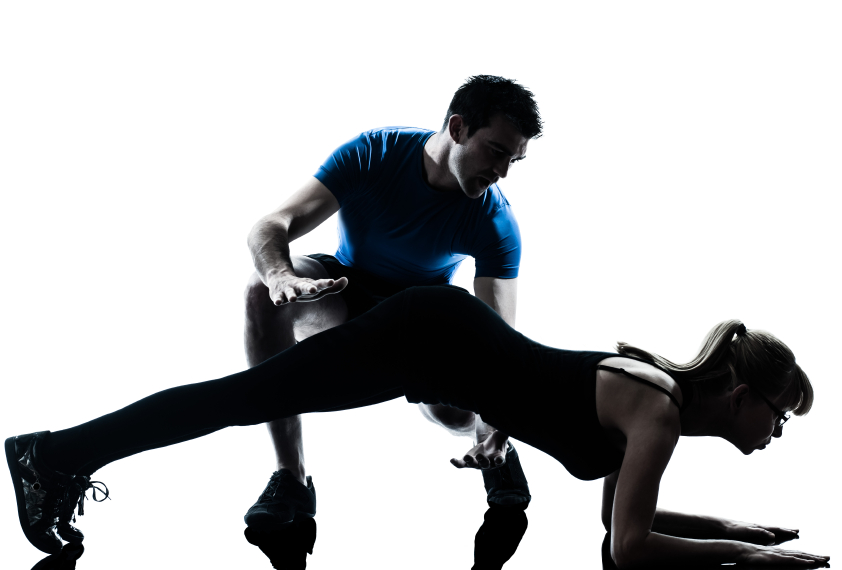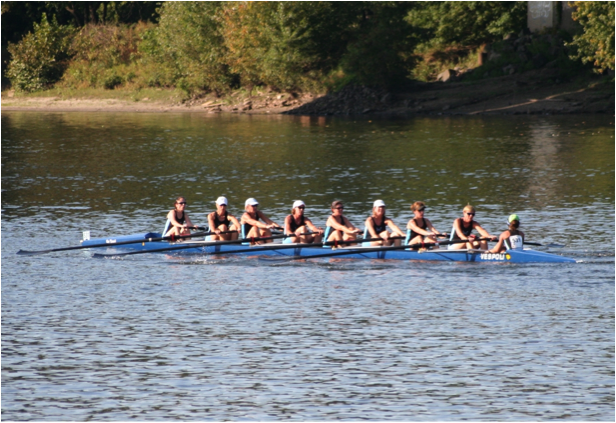Guyside. As advertised on TV: selling men short
It’s perhaps the easiest thing in the world to criticize TV advertising. Everybody sees an ad and find it puerile, stupid, offensive, or something. And there’s no doubt that women have been very poorly treated by all sorts of ads in the past and now, too. Objectified, used purely for their sexuality, portrayed as stupid — there’s a legendary description of advertising as “Two Cs in a K.” The K stands for kitchen; I’ll let you figure out what the C stands for.
But it ain’t so great for men either, out there. My personal favorite ads? Just for Men. Oh, Just For Men, how you sell men short. I’m divided over which of their campaigns is more patronizing and offensive: the one with two adorable daughters telling their dad “it’s time”:
The inexplicable “Beard Baby” ad:
Or the one with three retired athletes humiliating themselves in front of bimbos:
It’s not just hair commercials for older dudes. It’s razor commercials, and even commercials aimed at younger guys (AXE, anyone?). I wouldn’t even call it subliminal — it’s quite clear that for advertising aimed at men, the message is: “Use our product, get laid.” That makes very good sense… if you’re advertising an erectile dysfunction drug.
What bugs me about the advertising aimed at me is that the only reason for exercise, for grooming, or other products or services aimed at men, is heterosexual sex. Don’t get me wrong — I’m in pro-heterosexual sex. I just think (a) there’s more to the world than just a man and a woman having sex; and (b) there are more motivating factors in the world than that.
As a man, my frustration with ads targetting me makes me think about the ads targetting other demographic segments. I don’t doubt that other groups are as poorly served by TV ads aimed at them as men are by ads for “men’s products.” And so it’s no wonder that there’s so much kibitzing, good-natured and otherwise, about the poor job these ads do to communicate their messages.
Think of the difference between this razor commercial:
And this one:
To me, the difference is one of tone. One is cynical, relying on the brain-penis connection. The other is smart and self-referential, acknowledging that this really is just body wash, after all.
The success of the Old Spice ad campaign was phenomenal. But we need to continue to teach advertisers that men are more than leering adolescents, and that when you make ads like these, you sell men — and women — short.
Read MoreMale or female – when it comes to working out, silence is golden
 Silence is golden, at least it is when it comes to choosing your workout partner.
Silence is golden, at least it is when it comes to choosing your workout partner.
I write a lot about the importance of physical activity and this seemed to be the perfect post to kick off Women’s Health Week.
Data have suggested that an optimal workout partner can actually improve both the intensity and duration of exercise by as much as 208%. Indeed, according to Brendan Irwin, an assistant professor of kinesiology at Kansas State University, having a skilled workout partner who keeps verbal encouragement to a minimum is the key to optimizing workouts. Hmm, a skilled person. This idea builds upon behavioral research theory that suggests that the presence of a superior partner may improve motivation in the ‘weak link,’ especially when both people are on a team together. But in addition to the weak link-superior workout partner theory (which I find especially fascinating) is that I would expect that encouragement would be a motivator, not a detractor.
Irwin and his colleagues at Michigan State University asked 115 male and female students (on average, 20 years old) to perform a series of five abdominal planks (holding each as long as they could) after watching a brief instructional video. For those unfamiliar with planks, they are body-weight resistance exercises in which one ‘suspends’ his or her body weight using abdominal muscles. Generally, planks are isometric, require little coordination and are effort-based. They are also quite difficult to hold for any significant period of time. (My best time, for example, is 1 min 40 seconds and my worse, 15 seconds.) For a ‘variation on a theme,’ the differences between the five planks were subtle, e.g. holding a push up position on one’s forearms on each side, etc. Next, the students were divided into three groups:
- The first rested for 10 minutes.
- The second group were told that they would be exercising with a partner (on video at another location) who they met briefly via a Skype call (in reality, that person was ‘in on the research’ and the exercise portion of the session had been pre-recorded). They were informed that the partner was slightly better (skill wise) than themselves.
- The third group was told that they would be exercising with a partner who would encourage them (and, due to technical difficulties, only the partner would be able to communicate).
Irwin says that at first, he and his colleagues thought that it made the most sense that encouragement from a workout partner would be motivating. However, what they found was the opposite: “when exercising with someone who is slightly better [i.e. about 40%] and who is not verbally encouraging, participants exercised longer than if the conditions were the same but that person was verbally encouraging them.” That is, even after controlling for individual differences in strength, exercising with a partner who was more skilled boosted persistence by an average of 78%, and the optimal partner – more skilled and who kept the rah-rahs to a minimum translated into a longer bouts of exercise. Perception is key; Irwin explained that those people who received encouragement from a more skilled partner may have interpreted the comments as condescending or patronizing.
However, will this hypothesis work on older individuals as well? When I asked Professor Irwin this question directly, he said that to the best of his knowledge, ” there is no empirical reason to believe that the results of this study wouldn’t apply to a wide range of age groups. In fact, anecdotally, I hear from faculty and middle-age folks all the time who read about this study (and others like it) and are quick to validate that a partner can be very motivating for them (e.g., “I play tennis with a friend who is a little better than me and it really gets me going!”).”
What about you? What type of person motivates you the best to surpass your own expectations?
[Professor Irwin’s study — “You Can Do It: the Efficacy of Encouragement in Motivating the Weak Link to Exercise Longer During an Online Exercise Video Game,” is slated for publication in the Journal of Medical Interent Research]
Read More
Finding the ME in menopause. Guest post by Kelley Connors
Sometimes you meet a person and know instantly that s/he will be an influencer in your life, someone who shares a common interest and someone who can teach you a few important lessons. Kelley Connors is one of those people. I met Kelley at a conference last Fall and continue to be wowed by her contributions to women and their health. Thanks Kelley, for this great post!
The ME in menopause is a journey, or as best-selling author, Gail Sheehy, might say, a passage. Only there are distinct differences from that original publication back in 1976 when Ms. Sheehy was in her late 30’s, and first wrote about the midlife “crisis” as passage point.
Ms. Sheehy is the first to admit that the first book fell short on what would become the real midlife, as she had no idea of what 50 might look like herself in 1976, other than distinctly “old” images of her mother and father. (Since then Ms. Sheehy has written New Passages and Passages for Caregivers, inspiring many women like me to also share my “passage”.)
Things are different today, in 2012, as we now know that menopause is a time of estrogen-deficiency, and not a crisis at all, but a virtual gateway to the next 30-40 more years of life. It’s a time of awakening, of realizing our potential, and potentially a very free-ing time in our lives.
That’s how I’ve chosen to see this time in my life and I’d like to be one of the increasing numbers of “old” women, who might see 92 from the third seat in a scull, and rowing in a Master’s rowing event instead of succumbing to osteoporosis, one of my biggest risk factors.
So, with my vision for how I wanted to be at 92, I became more interested in creating a foundation for wellbeing, a pathway that would give me the tools for a positive mindset, a flexible and strong body, and the energy to be creative – all factors in assuring longevity. Research shows us that doing all we can do in our 50’s is critical to setting a foundation for living well through out our life – emotionally, physically and spiritually.
How I Have Reinvented Menopause (so far)
As I near menopause, I decided to take new steps – steps that I had previously not really considered important in my life.
Once I learned about how the physiological changes associated with estrogen loss, I decide to be more proactive in preserving my quality of life, and perhaps even gain strength, muscle mass and, the holy grail, fulfillment and happiness. One thing was motivating me for sure – I did not want to succumb to the conflicting and disingenuous advertising messages we’re bombarded with as we women age!
First, exercise for wellbeing. I made a decision to join a women’s rowing, or crew team. It was not a decision that was easy to make, as I’m not an early morning person, but, as I’ve come to appreciate, there’s nothing like rowing with like-minded women on calm waters – and, there’s no better way to start a hectic day than rowing at 7 am. The really great thing about rowing is that you have to learn to “recover” from each stroke, giving you the cardiovascular strength you need to row for at least 30 minutes and possibly, achieve your target heart rate for at least 20 minutes. Cardiovascular strength training such as rowing or bike riding, is good for your heart, and makes you feel better, giving you a sense of wellbeing. While you will probably loose weight, the sense of wellbeing will be motivation enough to continue your commitment to yourself. You might even be able to rid yourself of an anti-depressant prescription!
Second, take a proactive mindset instead of a reactive mindset around nutrition. One of the changes I made to my diet, as a result, was taking dietary supplements. New research shows that taking a multi-vitamin may not help us women live longer. However, there are several key dietary supplements that are recommended for menopausal women such as fish oil supplements ( Omega-3 fatty acids), Vitamin D and Calcium. Have you considered taking any of these supplements that are proven to help menopausal women?
Third, I created my first ME-Pause. This “ME-pause” was packaged in a not so neat bow, with no clear answer, no clinical trails, and, ironically, no obvious relationship to my health. My Me-Pause was a defining moment as I declared the death of my life as a run-on sentence. Taking time to pause, reflect, think and plan have become more important to me. Putting a comma in a sentence is a good thing.
My ME-Pause turned out to be a cultural expedition to a little known ancient civilization, the last Shangri-La and a Buddhist haven nestled in the Himalayan Mountains – Bhutan. A remote civilization with few roads and hundreds of temples, Bhutan measures its progress by Gross National Happiness – as opposed to GNP. As Buddhists, the Bhutanese believe happiness arises from causing happiness in others. It’s more than a fleeting feeling of joy, but a belief in the power of positive thoughts, simple acts of kindness and love that transform people, communities and our relationship to the world.
The overarching result of my two-week trip to Bhutan with my aunt remains significant in my life today. I’m looking at menopause as a glass half full, a time in my life that is just the beginning to finding and designing the second half of my life with renewed passions and interests. I’m seeing, for the first time, that I can create my own wellspring for living better .. and into old age..and just maybe, I’ll have that third seat in the scull with three other women rowing the calm waters of the early morning.
About the author…Kelley Connors, MPH, is a women’s wellness coach, marketer and advocate for women’s health. She is the founder of Real Women on Health and President and Chief Creative Officer for KC Health.
Read More








